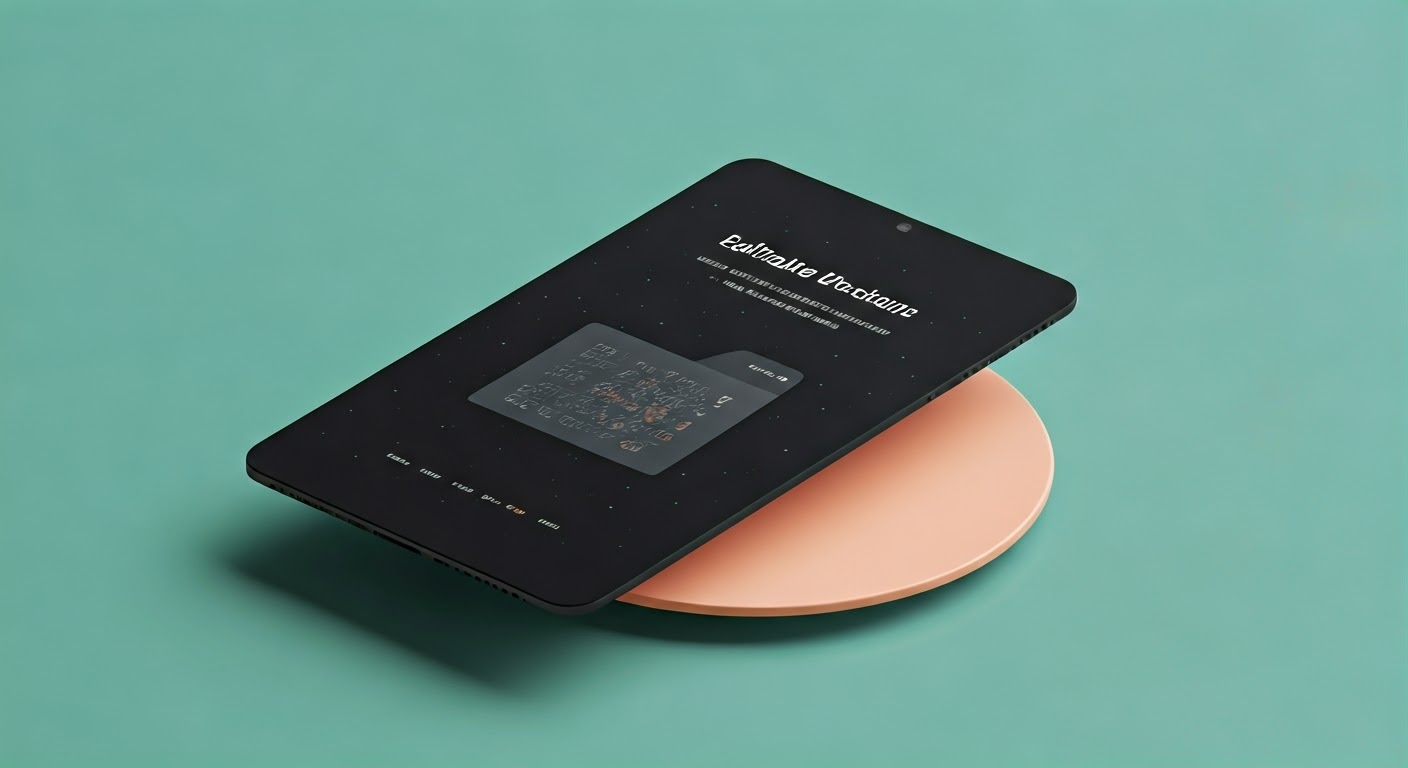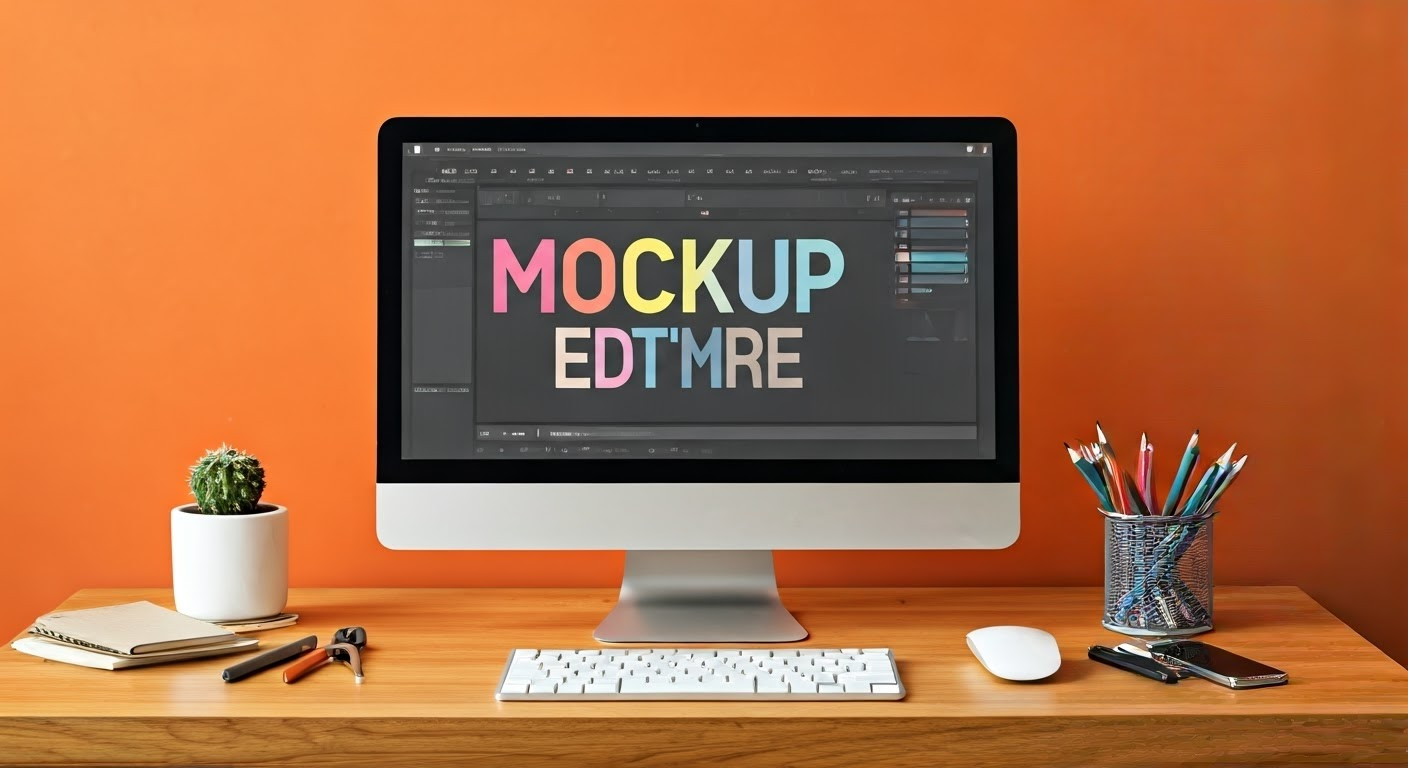Mockups are very important in web design and app development. You may have seen them as neat and clear versions of what your final product might look like. These editable mockups allow you to make changes easily without starting to code. While wireframes give a basic outline, mockups improve looks and structure, getting designs ready for use. In this guide, we will explore the editable elements in mockups and help you have a smoother design process.
Key Highlights
- Editable mockups serve as an essential part of the web and app design process, bridging basic wireframes and interactive prototypes.
- Common editable mockup elements include text changes, image replacements, color adjustments, and component placements.
- Layering in design tools such as Adobe Photoshop ensures precision and non-destructive modifications during editing.
- Industry software like Uizard and Adobe Illustrator simplifies mockup customization for beginners and professionals alike.
- Understanding static and dynamic components aids designers in achieving streamlined workflows and meeting stakeholder expectations.
- Following a structured editing process enhances efficiency while preserving design integrity and functionality.
Overview of Editable Elements in Mockups
 Editable mockups are useful tools that turn your design ideas into a clear preview. With these digital models, you can easily change placeholder images, edit text, try out different color schemes, or adjust where objects are placed. This flexibility helps designers adapt to branding needs, usability, and feedback from others.
Editable mockups are useful tools that turn your design ideas into a clear preview. With these digital models, you can easily change placeholder images, edit text, try out different color schemes, or adjust where objects are placed. This flexibility helps designers adapt to branding needs, usability, and feedback from others.
What makes editable mockups really special is how they connect creativity and practical use. They allow you to improve your ideas visually. This process helps you move toward finished prototypes and future development.
Defining Editable vs. Non-Editable Components
Editable parts of a mockup are where you can get creative. You can change details as much as you want. This includes text areas where you can adjust font styles, sizes, and themes. You can also swap out images for ones from your client or use high-quality photos. You can play around with colors to find different looks. Plus, you have the freedom to rearrange objects for better viewing.
Non-editable parts are the steady base of your design. They provide consistency and include things like static headers, fixed menus, and the layout of pages. These elements help keep everything the same across different versions, making your project reliable and stable.
Knowing the difference between editable and non-editable parts is very important. It helps you understand what you can change and what you should keep constant. This allows designers to create a better balance that meets both the needs of stakeholders and users. With this understanding, the editing process becomes clearer and more efficient.
Common Characteristics of Editable Elements
Editable elements are important in mockup design. They have special qualities like flexibility and accessibility. With editable text, it’s easy to change content to match branding and communication goals. Designers can play around with font types, sizes, and alignments to fit the visual theme of the app or web page.
Visual elements, such as imagery in app designs, are also very important. Placeholder graphics are replaced with better visuals that tell the project’s story. Adjusting colors for buttons, backgrounds, or other parts helps shape brand identity and makes the user experience better.
The placement of UI components adds function to editable elements. Designers can try different layouts and visual weights to improve user flow and interaction. Dynamic editing tools help create great visuals while keeping usability intact.
Tools and Technologies for Editing Mockups

Finding the right tools for mockup editing can feel overwhelming. However, it’s important to find software that fits your design needs. Adobe Illustrator is known for its precise tools. It works well for scalable vector-based designs, which are great for detailed mockups. In contrast, Photoshop is the choice for projects that rely heavily on photography. Its strengths are in raster editing.
Today, newer apps like Uizard make the editing process easier. They have drag-and-drop interfaces and use AI to help users. These tools help both beginners and experienced designers achieve smooth and polished results.
Software Solutions for Mockup Customization
Big companies like Adobe Photoshop and Illustrator are leaders in mockup customization. Photoshop is great for working with images. It helps with changing pictures, putting layers together, and editing backgrounds. It’s especially good for mockups of product packaging and detailed visuals for websites and apps.
Illustrator uses vectors, which makes it easy to scale UI designs. Whether you’re making logos, icons, or other design pieces, Illustrator gives sharp results no matter the screen size.
There are also simple online tools like Uizard. Uizard has a user-friendly setup and AI features that help you customize mockups quickly for app designs, tablets, and websites. Beginners can easily use its templates, while experienced designers enjoy its useful functions, combining creativity and ease very well.
Online vs. Offline Tools: Which to Choose?
Mockup editing tools come in two main types: online and offline. Offline tools, like Adobe Illustrator, give you great control and advanced features for making high-quality designs. Online platforms, like Uizard, focus more on being easy to use and allowing teamwork.
| Aspect | Online Tools | Offline Tools |
|---|---|---|
| Ease of Use | Easy to use with drag-and-drop | Needs training and tech skills |
| Collaboration | Work together in real-time; share links | Share files with the team manually |
| Functionality | Only allows easier edits | Offers detailed and advanced changes |
| Cost Efficiency | Affordable plans; some free options | Usually costs more with occasional fees |
Knowing what you need—whether it’s quick online edits or detailed changes offline—will help you pick the best tool for your mockup work.
Step-by-Step Editing Process for Mockups
Editing mockups is an easy process. Start by setting up your design workspace with your favorite software. This could be Adobe Photoshop or Uizard. Organize your mockup into layers. This helps you see the difference between static parts and editable elements.
Next, go to each layer to change text, images, colors, or layouts that need fixing. Check how each change looks as you work. This ensures everything looks good and is easy to use. When you finish, export the updated design. Make sure it meets your project needs while keeping the design intact.
Initial Setup and Preparation
Effective mockup editing starts with good preparation. First, choose your software. You can use Photoshop, Uizard, or Illustrator. Make sure it matches the project needs and your skill level. Next, import the raw mockup file into the editing program to begin.
Organize your workspace by sorting the mockup layers. Put each design element in its own layer. This way, you can make changes without affecting other parts. For instance, have buttons, headers, and images on separate layers. This method gives you more flexibility as you work.
Also, load important assets like branded visuals, color choices, and typography tools early. This will help you work more smoothly later on. With solid groundwork, the design process will be easier and less likely to have mistakes.
Layer-by-Layer Editing Techniques
Layering is key to changing mockups accurately. Start by picking out the specific layers connected to editable elements. For example, find the layer for a text box you want to change or a button you need to recolor.
Use your software’s selection tools to work right on these layers. You can resize objects or change transparency, and most tools keep the original design safe. This method, known as non-destructive editing, saves time and improves accuracy.
It’s best to focus on dynamic layers instead of static ones. Think about changing branding details, like product colors, while keeping the navigation headers the same. By using step-by-step layering techniques, you can make precise edits without changing how everything works together. Exploring layers helps each design element find its right spot easily.
Finalizing and Exporting Edited Mockups
After you’ve made all the changes you want in the mockup, it’s important to finalize the design before sharing it or using it in the development process. Start by carefully reviewing your mockup. Check that everything looks good between the changes you’ve made and the elements that stay the same.
Then, test its functionality. This means making sure any color changes help make it easier to use, rather than making the layout busy. You might need to fix things like moving text boxes or creating more space between crowded parts of the UI. Each little change helps improve your design’s look and how users interact with it.
Finally, export the mockup file in formats like PNG, PSD, or vector formats. These options make it easier to share with developers or stakeholders without losing the ability to edit. Your polished mockup is ready to go into the prototype phase or be used in actual projects.
Best Practices for Mockup Editing
To have a smooth workflow, follow the best practices for mockup editing. Start by thinking about the design’s integrity. Keep a consistent look while adding new ideas. Also, focus on usability factors that meet what clients expect and how users engage.
Choose the right software tools based on your skills and project needs. You might use Photoshop for detailed edits or Uizard for easier tasks. Picking the right tool can boost your productivity. Always remember, being structured and organized in your mockup editing can save you time and improve your results.
Maintaining Design Integrity During Edits
To keep the design consistent while making edits, pay close attention to details. Start by knowing what the client wants or what the stakeholders expect. These guidelines help keep changes within limits. For example, any color or font changes should still show the brand’s main identity.
Next, use the layer features of design tools effectively. Each piece, like a button or navigation bar, should be on its own layer. This way, you can edit them without affecting others. For instance, if you change an image layer, the text nearby stays the same.
Get feedback from your team through reviews for big changes. Stakeholders, such as developers or creative leaders, can provide important insights to improve the design. It is important to make small changes gradually instead of doing major updates. This helps keep the main goals of the project safe during your editing process.
Tips for Efficient Workflow in Mockup Editing
Streamlined workflows are important for editing mockups effectively. Start with a good plan. Focus on easy-to-edit parts first, such as text placement, before moving on to harder changes like colors or UI layout.
Use the right tools that match your skills. If you need to edit simple graphics, online tools like Uizard make it easy. But if you need more complex functions, Adobe Photoshop provides exact control and detail.
Finally, make use of automation tools when you can. AI-driven tools like Uizard’s Screenshot Scanner help you skip the manual setup. They quickly create editable elements from examples. This saves time and makes the process faster. Always follow a clear process. Create backups after each important change and stay focused on layers for the best outcomes.
Conclusion
Knowing the editable elements in mockups is very important for designers who want to make strong and professional presentations. When you understand which parts can be changed, you improve your ability to share ideas clearly while keeping good design standards. Using the right tools and following best practices will make your editing process smoother. This helps you work better and create polished results. Whether you are an experienced designer or new to this field, learning these ideas can greatly improve the quality of your presentations. If you want to boost your mockup editing skills, look for more resources or get expert advice!
FAQs
What are the most commonly editable elements in mockups?
Editable elements in mockups usually include changes to text, swapping images, adjusting color schemes, and moving objects. UI design and product design focus on these flexible parts. This allows for adjustments based on changing needs or feedback from those involved.
Can dynamic elements in mockups be edited?
Yes, you can easily edit dynamic elements like buttons, fillable forms, and responsive imagery in mockups. Most app design tools and mockup software allow you to change these features. This makes sure that the changes fit well with the look and functionality you want.
How does layering affect the editability of a mockup?
Layering is important for making mockups easier to edit. By dividing elements like text, colors, or buttons into separate layers, designers can change things without harming the original design. This setup helps simplify the editing process and keeps the design process smooth without needing extra changes.
Which tools are recommended for beginners in mockup editing?
Beginners can use easy tools like Uizard or Adobe Photoshop for editing mockups. Uizard has a simple drag-and-drop setup and helpful templates. Photoshop has features that are easy to understand, making it simple to try out different visual and interactive designs.



No Comment! Be the first one.